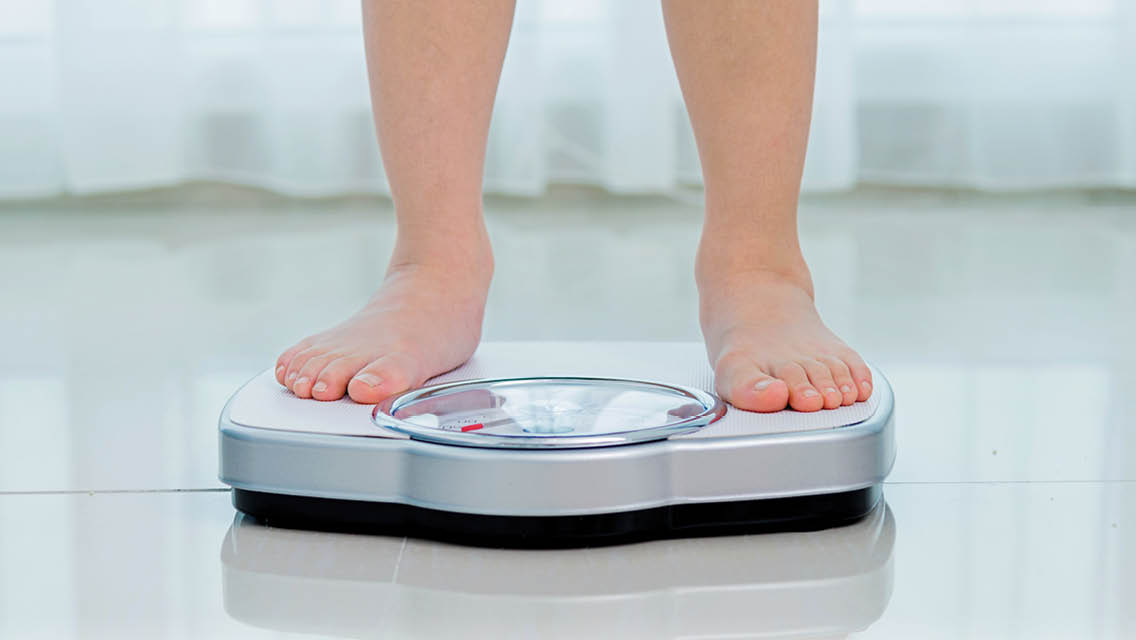Obesity has become one of the most common pediatric chronic diseases: some 14.4 million American children now live with the condition. These kids require urgent, proactive, and intensive treatments, ranging from nutrition and lifestyle therapies to pharmaceutical interventions and bariatric surgery.
That’s the message the American Academy of Pediatrics (AAP) is sending in its first new guidelines on childhood obesity in 15 years.
The issue is dire, the AAP states. About one in five American children between the ages of 2 and 19 currently has obesity, according to the Centers for Disease Control and Prevention. The CDC defines obesity as a body mass index (BMI) at or above the 95th percentile for youth of the same age and sex. And studies show the prevalence of childhood obesity increased by nearly 2 percent just during the first year of the COVID-19 pandemic.
Pediatricians have historically treated the condition with “watchful waiting” — delaying treatment to see if children outgrow obesity, explains AAP guidelines coauthor Sandra Hassink, MD, MS, vice chair of the group’s Clinical Practice Guideline Subcommittee on Obesity.
The medical field tends to overestimate the ‘risk’ of ‘obesity’ and maintains that the negative side effects of weight-loss treatment outweigh the risk(s) of ‘obesity.’”
Based on new understanding of the myriad root causes of obesity, the committee of 21 prominent doctors and health researchers argues the condition should no longer be “stigmatized as a reversible consequence of personal choices,” and “has complex genetic, physiologic, socioeconomic, and environmental contributors.”
The guidelines also result from new research on the effects of obesity.
“We now know more about obesity as a disease, its contributors, and what works for treatment,” says lead author and committee chair Sarah Hampl, MD, a pediatrician at Children’s Mercy Kansas City and professor of pediatrics at University of Missouri–Kansas City School of Medicine. Risks include cardiovascular diseases and type 2 diabetes, plus emotional and mental health concerns.
The new guidelines urge pediatricians to “offer treatment options early and at the highest available intensity.”
A New Sense of Urgency
The extensive, 235-page AAP report examines the trend and its causes, but it focuses on treatments. “The goal is to help patients make changes in lifestyle, behaviors, or environment in a way that is sustainable and involves families in decision-making at every step of the way,” Hassink explains.
Key treatments include:
- Intensive health behavior and lifestyle treatment — including nutrition, physical activity, and behavioral-change support — should be available to all children starting at age 6. “It is the most effective known behavioral treatment for child obesity,” the AAP notes.
- Weight-loss pharmaceuticals should be offered as an adjunct to behavioral therapy to obesity adolescents ages 12 years and older.
- Metabolic and bariatric surgery should be considered for teens age 13 and older with severe obesity. “Both laparoscopic Roux-en-Y gastric bypass and vertical-sleeve gastrectomy result in significant and sustained weight loss as well as improvements and/or resolution of comorbidities,” Hampl and Hassink write.
These guidelines amount to “a big shift,” Aaron Kelly, PhD, tells the New York Times. Kelly, codirector of the Center for Pediatric Obesity Medicine at the University of Minnesota Medical School, was not an author of the guidelines. “Everybody likes to simplify what obesity is, but it’s not just a matter of kids or their parents trying harder to eat less and move more.”
Guidelines Criticism
Still, the new guidelines have received fervent responses on numerous fronts. On a fundamental level, some critics lambast the AAP for reinforcing the entrenched conventional medical focus on weight as a key measure of health.
“The medical field tends to overestimate the ‘risk’ of ‘obesity’ and maintains that the negative side effects of weight loss treatment outweigh the risk(s) of ‘obesity,’” argues the Collaborative of Eating Disorders Organizations (CEDO) in an open letter responding to the new guidelines. “If we are operating under the assumption that weight loss leads to improved health outcomes, it’s also important to note that studies assessing the efficacy of diets do not show evidence of health improvements and are ineffective at ‘obesity’ prevention.”
Others consider the assessment of obesity via body mass index outdated, as mounting evidence finds BMI to be a problematic measurement, especially with children’s developing bodies. (For more on concerns with BMI, “Beyond BMI: Why True Health Is About More Than What You Weigh.”)
But the guidelines’ recommended treatments have raised the most concern. Integrative dietitian and functional-medicine practitioner Ali Miller, RD, LD, CDE, says she was “astounded and outraged” to hear of pharmacotherapy and bariatric surgery recommended for children.
AAP guideline authors base their arguments for drug interventions in part on studies done by pharma makers, Miller says. And they do not consider the drugs’ especially extreme side effects — including various physical and cognitive issues as well as “suicidal thoughts” — on developing bodies.
Promoting weight loss pharmacotherapy, CEDO notes, “creates the false impression that a pill will ‘fix’ the problem. This allows the reckless market of over-the-counter diet pills and weight-loss supplements to thrive.”
Promoting weight loss pharmacotherapy, CEDO notes, “creates the false impression that a pill will ‘fix’ the problem. This allows the reckless market of over-the-counter diet pills and weight-loss supplements to thrive.”
CEDO also argues that bariatric surgeries carry significant risks, including ulcer development, bowel-motility issues or obstructions, nausea, vitamin and mineral deficiencies, surgery complications, PTSD, and even death. “Adolescents do not have the emotional or cognitive capacity to navigate the complex medical, nutritional, and life changes that bariatric surgery involves.”
For her part, child and adolescent psychiatrist Deborah Simkin, MD, DFAACAP, who teaches at Emory University School of Medicine, is concerned about the causes and effects left out of the report — in particular, the role PTSD caused by adverse childhood experiences (ACEs) plays in obesity.
“ACES, especially in those under age 7, will not respond to traditional therapies and medications,” Simkin notes. “No weight-loss program will help until this is addressed. Weight is sometimes protective to ward off sexual advances.”
Others view the issue of obesity as a larger, more complex cultural and socioeconomic problem: “We cannot solve anti-fat bias by making fat kids thin,” writes Virginia Sole-Smith, author of Fat Talk: Parenting in the Age of Diet Culture, in a New York Times essay. “Our current approach only teaches them that trusted adults believe the bullies are right — that a fat body is just a problem to solve.”
The Need for Preventive Medicine
Notably, critics say the AAP report fails to meaningfully address the many roots causes of obesity as preventive medicine.
“We do believe that pediatric healthcare providers have an important role in obesity prevention,” counters Hampl. The AAP will be releasing a separate policy statement to that effect in the next year, she explains.
The guidelines encourage public-health policies and “supportive payment” that covers comprehensive obesity prevention, evaluation, and treatment. In particular, policy changes must “combat structural racism, which drives disparities and inequities in childhood obesity and obesity-related comorbidities,” the accompanying AAP executive report states.
“The medical costs of obesity on children, families, and our society as a whole are well-documented and require urgent action,” says Hampl.
This article originally appeared as “New Treatment Guidelines for Childhood Obesity Met With Concerns” in the June 2023 issue of Experience Life.





This Post Has 0 Comments